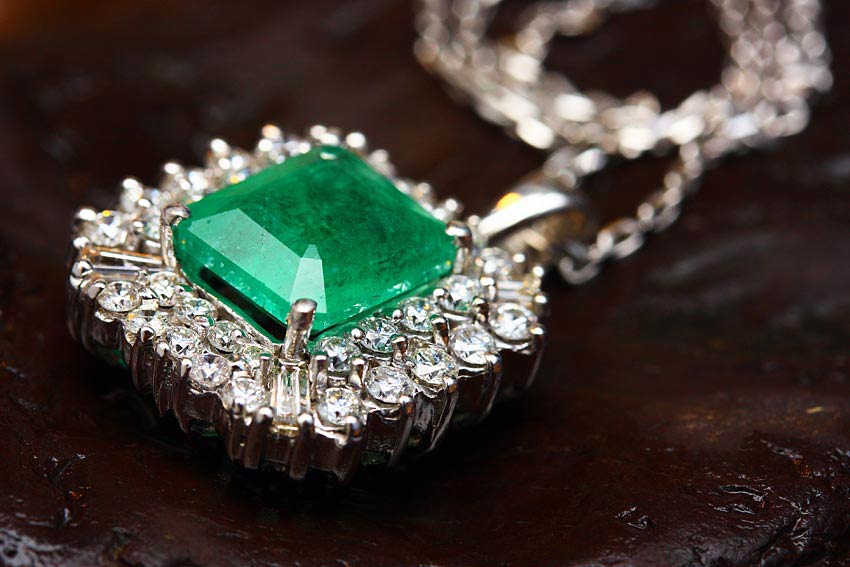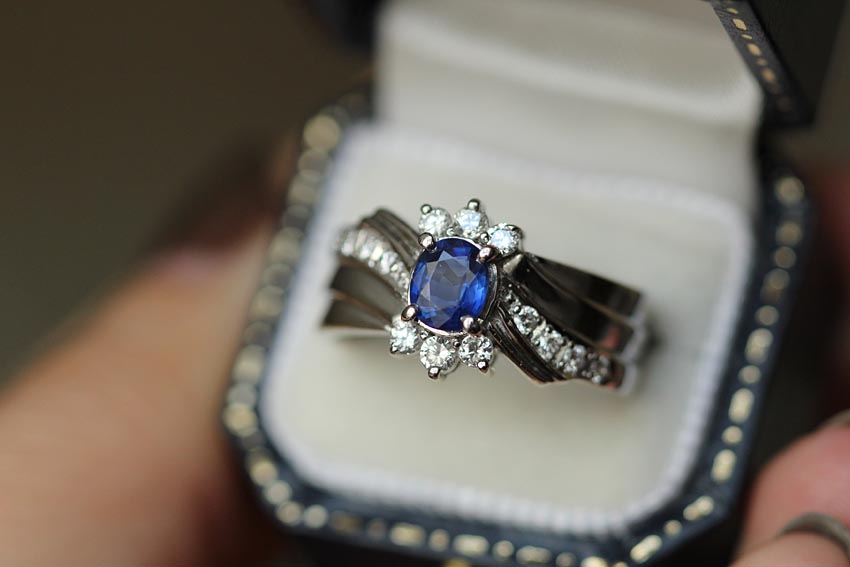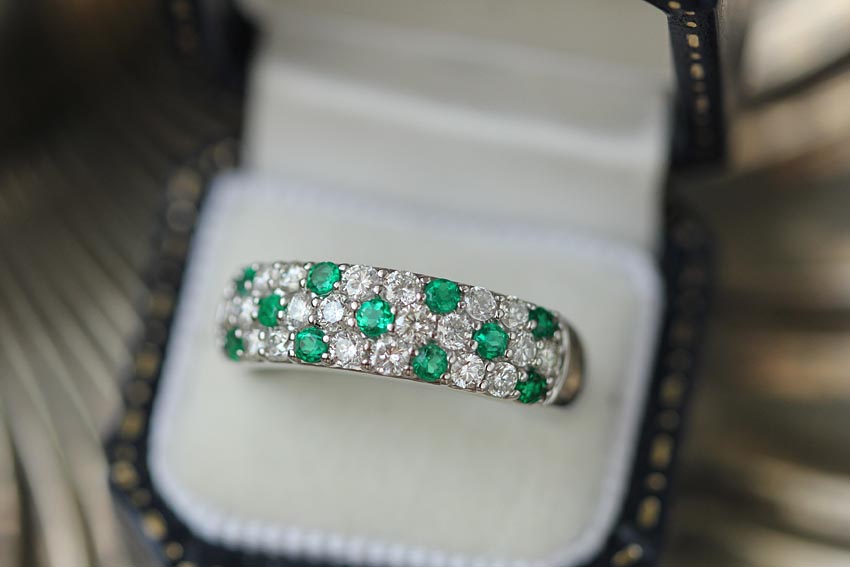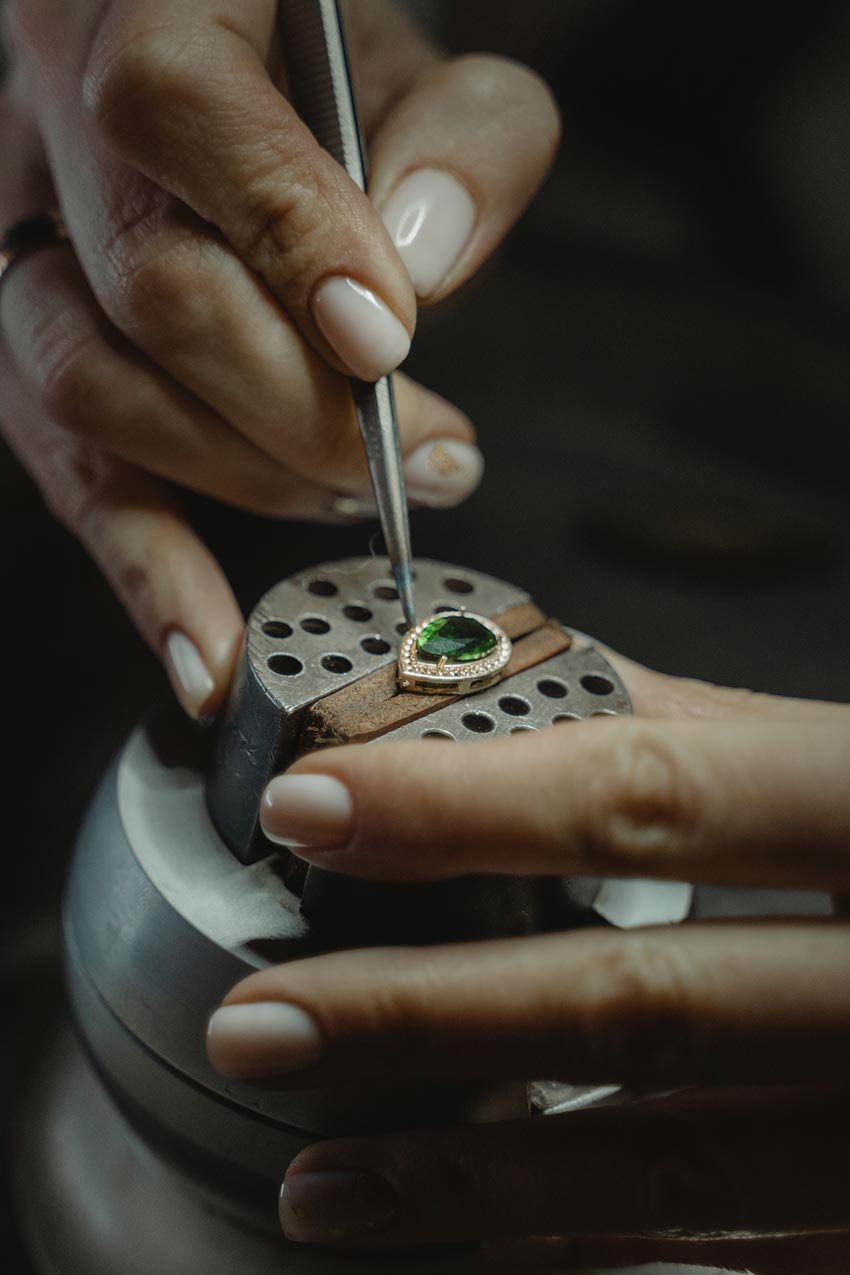Understanding gemstone quality is a confusing subject for most buyers, even though it affects large purchases. So here’s our complete guide to understanding the 4Cs of gemstone grading process that every buyer needs to know.

Gemstones are rare precious or semi-precious stones that we use in jewelry and accessories. They need to adhere to strict standards of quality if they’re to both look good and meet expectations of jewelry buyers according to how they are priced.
Of course the problem is that most people are not experts in grading precious stones, and so it’s possible to be duped through lack of knowledge, or simply to make the wrong choice when choosing between similar pieces.
Since items with gemstones tend to be expensive, it’s important to know how to access their quality as a buyer. Gemstones can be both natural and artificial, and sometimes they tend to look very similar to the untrained eye. That’s why we have created a guide so that you can check gemstone quality of natural pieces.

So, let’s go through the different steps involved in assessing gemstone quality, and why this matters from a buyer’s perspective.
Get to Know the Four Cs
There are four cornerstones of the precious stone grading process, and conveniently they all begin with the letter C. These are the stone’s color, its clarity, its cut and its carat weighting.
The 4 major factors that determine gemstone quality are color, clarity, cut and carat weighting
You don’t need to become a grading master to get a sense of what each means, and how they impact the overall quality of a given stone. Read on for info that every jewelry consumer should have in their locker.

Color
There are three distinct elements that go together to make up the color of a gem – the hue, the tone and the saturation.
Hue refers to the overall color of the stone, and includes categories such as red, yellow, blue and purple. There are also colorless gems that don’t have a hue; such as diamonds, which may be referred to as white in color, to confuse matters.
Tone is a measure of a stone’s position on a scale between dark and light. Very dark stones sit towards the black end of the spectrum, while light toned stones are given degrees of whiteness.
Saturation is all about the strength of the hue exhibited by a gem.
The more intense examples of AAAA ruby rings, for example, might be said to have strong red saturation, while less pristine stones will have softer degrees of saturation, and will even look different in color even if they are chemically identical to their stablemates.
As you’d expect, the most highly prized gems are those with the highest levels of saturation and a consistent, pure hue throughout, which of course increases their price.
Diamonds are the exception, of course, in that they are graded higher if they come as close as possible to true colorlessness.

Clarity
As well as differences in how they are formed influencing the look of precious gems, another aspect of play is the humble inclusion.
Inclusions are essentially imperfections in the stone that can be anything from a trapped piece of a different material that’s suspended within the mineral itself, to a crack or lesion in the gem which reflects or refracts any light rays that pass through it in unexpected ways.
Stones can have a surprisingly high number of inclusions while still looking beautiful, so it’s only really on closer inspection that these blemishes will become apparent.
Even so, in the world of jewelry, a whole heap of scrutiny is poured over precious materials like this, so prices do shift according to even seemingly minor faults.

The best quality gems are what’s known as ‘eye-clean’, meaning that the only way to see any inclusions is to use additional equipment.
Of course there are also stones which are so heavily included to the point that the inclusions become a feature, rather than a flaw in gemstone quality.
Black diamonds are the best example of this, and so you shouldn’t necessarily be too worried about inclusions so long as the look of the gem is to your tastes, and goes with your wardrobe.
Cut
Gems don’t emerge from the ground as fully-formed, beautifully finished stones, in spite of what the movies might have you believe. In reality, they need to be refined from their raw form in order to look as appealing as possible.
This is where the cutting process comes into play in gemstone quality. It’s arguably the trickiest concept for jewelry buyers to get to grips with, because the best craftspeople are able to make their work look effortless.
Symmetry is one of the main elements at play here, because the more symmetrical the cut of the gem, the better it will look and the more capable it will be of reflecting light in an attractive way.
That said, some stones are cut in designs that are intentionally asymmetrical, so don’t forget to check up on what the designer was going for before drawing any conclusions.

Cutting is not the only work involved; gems must be polished to give their facets that mirror-shine that customers expect. Detecting a badly finished gem is much easier, because the surface will show telltale signs that can be seen with the naked eye.
Carat
While some of the elements discussed above are subjective, you can’t get around the objective fact of a gem’s weight, and that’s where the carat takes center stage in understanding gemstone quality.
This traditional method of measurement is equivalent to a fifth of a gram. As such, a gem that is rated at five carats will tip the scales at one gram, or 0.035 ounces.
A higher carat count on a piece of jewelry will usually mean that it costs more because more material is involved in its construction.
However, clever design tricks and configurations allow lower carat pieces to punch above their weight, so this should not really be the main aspect that you use to choose between products.

The Bottom Line
So to sum it up, how can you tell a good quality gemstone? They do well on the 4Cs of precious stone grading process – color, clarity, cut, carat. Good quality gemstones are highly saturated, have a consistent hue, no visible inclusions, symmetrical cuts, visibly smooth polishing, and higher caratage.
Whenever you are buying jewelry, it’s always wise to use a reputable supplier, as this can take a lot of the stress and uncertainty out of the equation. Research by going to different suppliers or stores, looking at their prices, and talking to the jewelers about why a gemstone is priced higher than others.
You should also aim to follow your heart and your budget, rather than being caught up in the numbers game of carat weights and inclusions. If a piece speaks to you and you love the way it looks in person, don’t be disheartened by the gemstone quality if there are imperfections.
That said, you also need to know what you are buying, and to see that the price is fair, which is why having these tidbits of information on what defines gem quality in your back pocket will stand you in good stead.
Read next:
Everything You Need to Know about Pearls
5 Tips for Choosing Milestone Jewelry

Shilpa Ahuja the editor-in-chief of ShilpaAhuja.com, which she founded with the goal of inspiring confidence in the modern working woman through fashion. Other than defining the direction of the magazine, she also writes about fashion & beauty trend forecasts, industry analysis, and opinions.
Shilpa’s work has been published in the University of Fashion blog and Jet Airways magazine. She is also an artist, illustrator and cartoonist. She is also the creator of Audrey O., a comic series that represents the lifestyle of millennial women. She enjoys creative writing and world travel. Her art has been exhibited at Harvard Graduate School of Design and the Aroma Hotel, Chandigarh and been published in Chandigarh Times.
Originally from Chandigarh, Shilpa also has a degree in architecture and has worked in interior project management. She is also the author of the book “Designing a Chinese Cultural Center in India”. Shilpa has a Masters in Design Studies degree from Harvard University.
For feedback and questions, please email [email protected].